Solving Quadratics by Square Roots INB Page
Today I’m sharing the interactive notebook page my students created to summarize solving quadratics by square roots. Solving quadratic equations by square roots is one of my students’ favorite ways to solve quadratic equations.
I covered solving by square roots after solving by factoring. Since my Algebra 2 students still struggle with factoring fluently, solving by square roots is like a breath of fresh air to them.
They get it. Square roots are accessible. However, they have a tendency to forget that the square root of sixteen is not just four. It’s positive or negative four.
No matter how many times I emphasize it, they can’t seem to remember the plus or minus sign in front of their answer.
This year, I decided to remedy this by putting an obnoxiously large plus or minus sign in their notebook. We took the notes on top of the plus or minus sign.
These are the same plus or minus signs that I used last year for graphing different types of slope in Algebra 1. I love finding new uses for files I’ve already created!
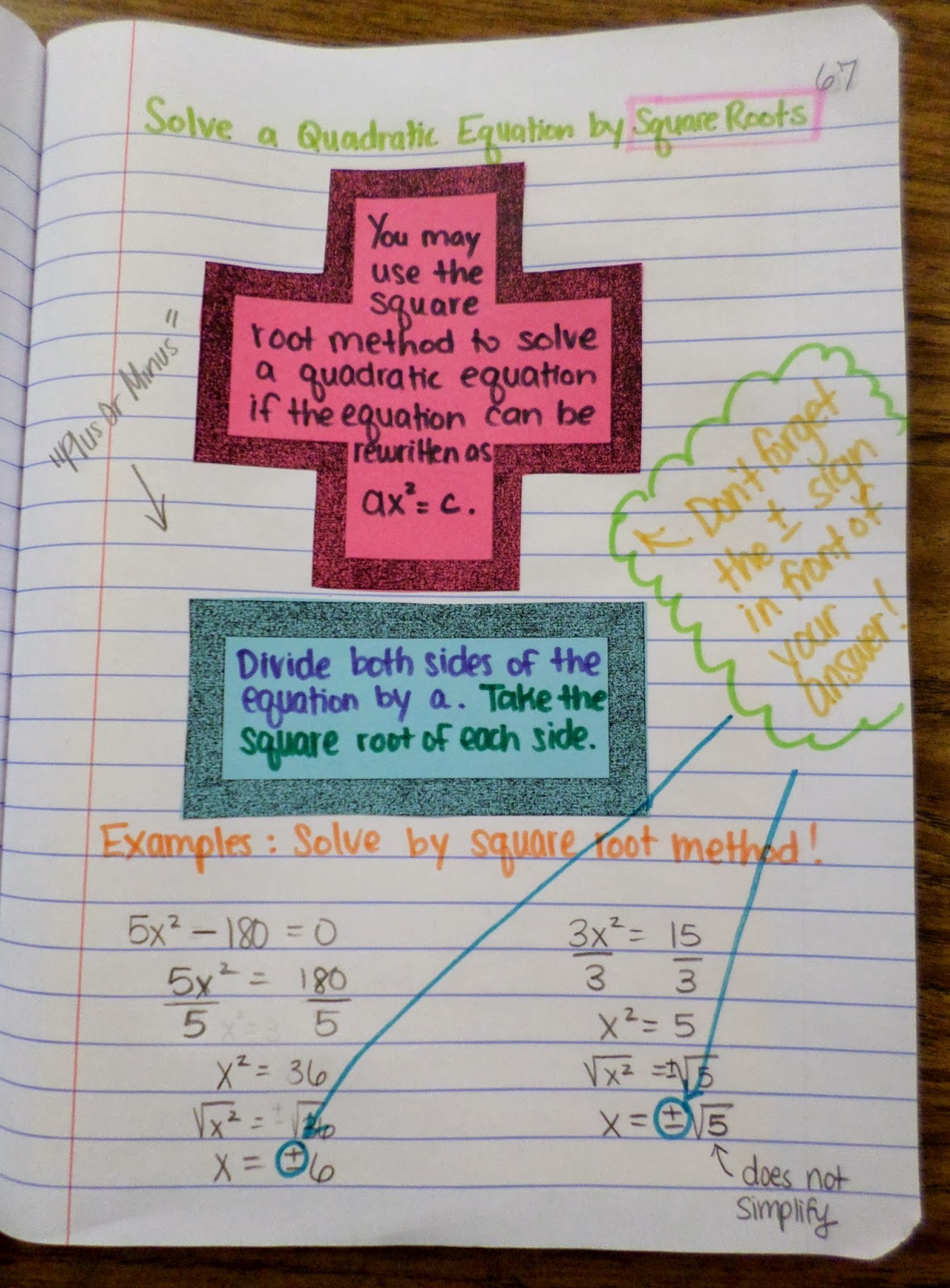
I wish I could say that this method was fool-proof. I wish I could say that my students never forgot the plus or minus sign in front of their answer.
But, then, I’d be lying to you. I do think that this visual helped some of my students, though.
Here’s the two-page spread in our interactive notebooks. Here’s a link to the blog post about the Zero-Product Property and Solving Quadratics by Factoring.
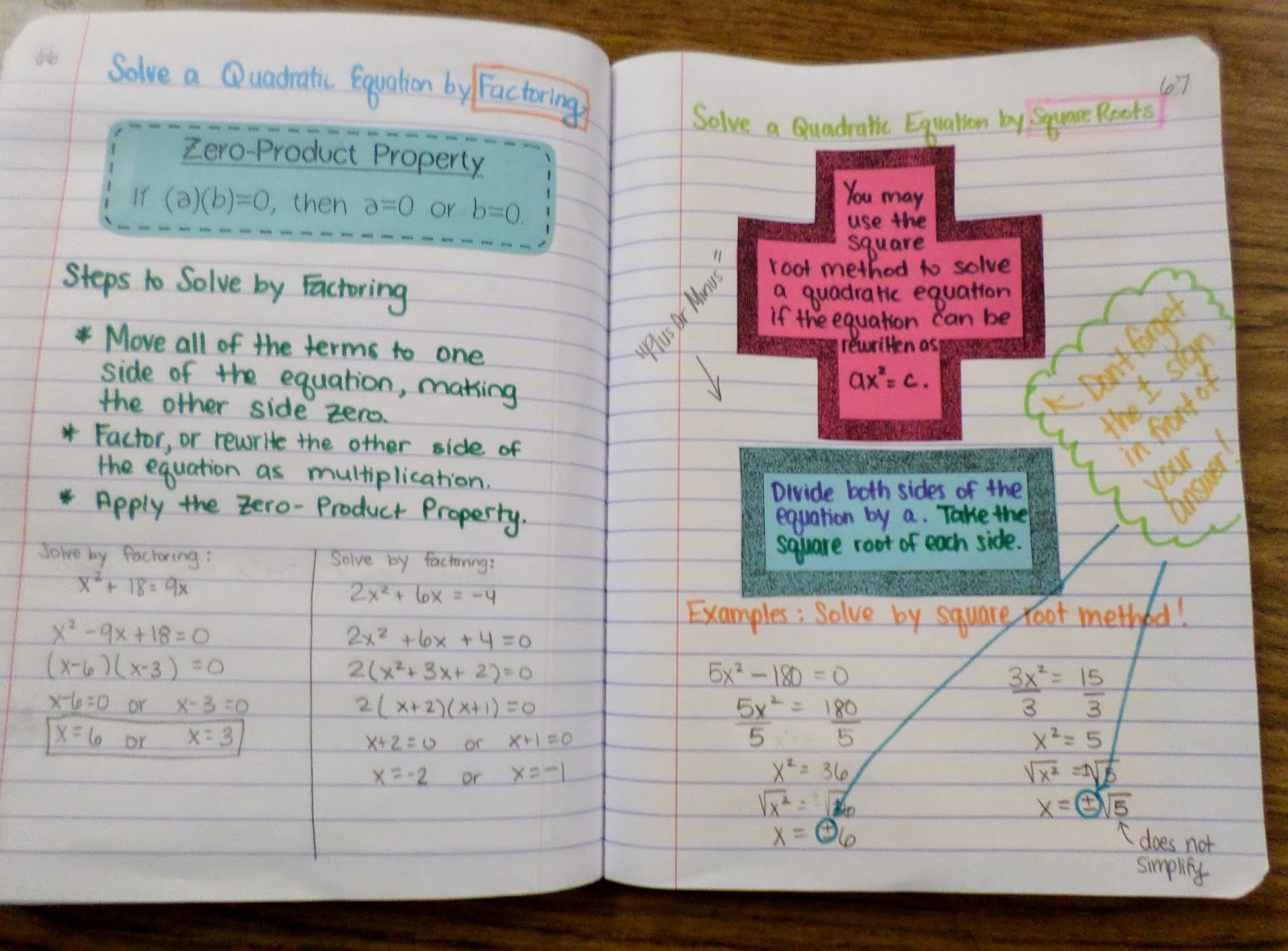
Here’s a slightly different version from 2015.
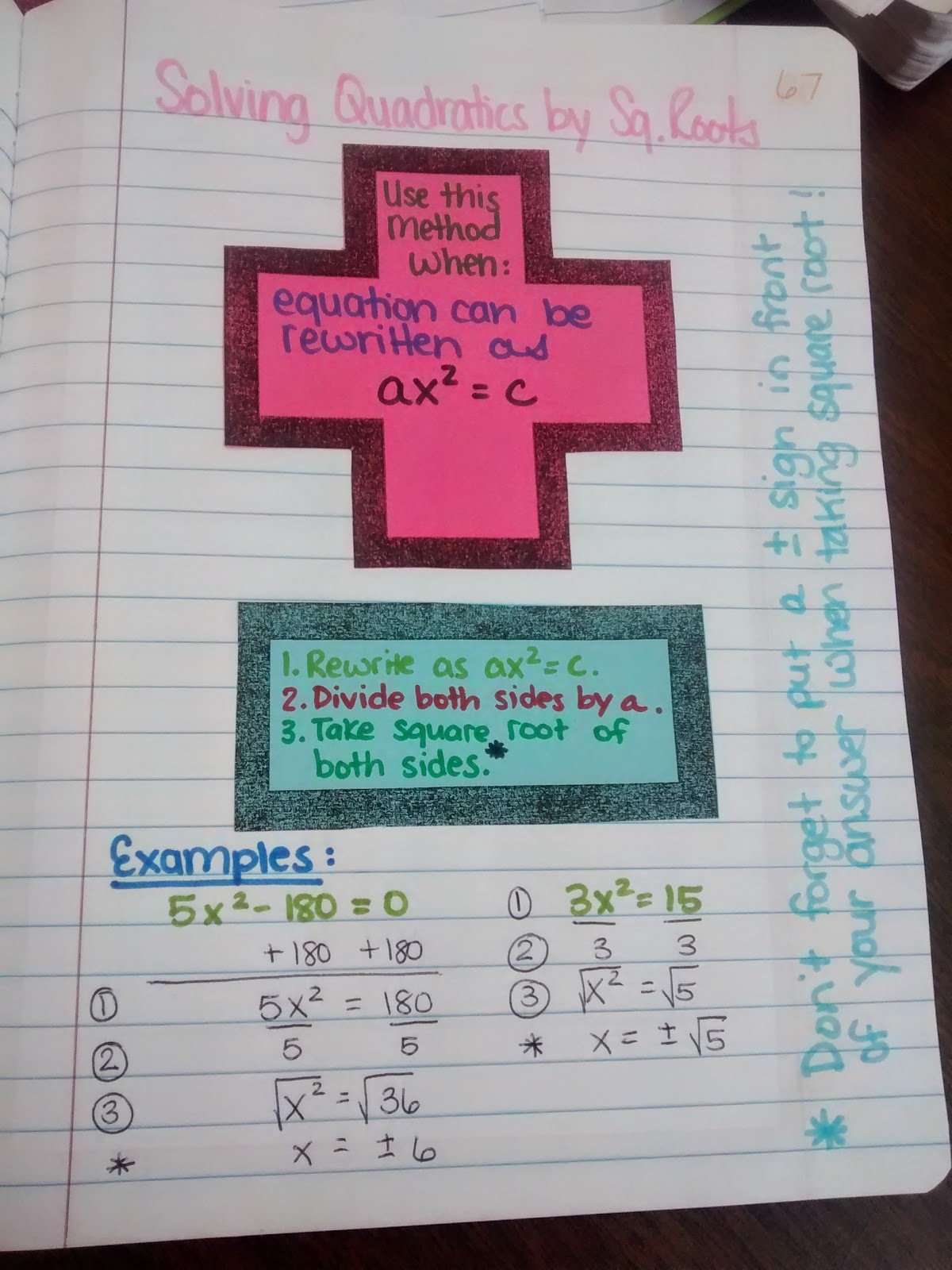
Plus or Minus Signs for Solving Quadratics by Square Roots
Click here to SAVE the file to your device.Plus and Minus Signs (PDF)
2427 saves – 7.18 KB


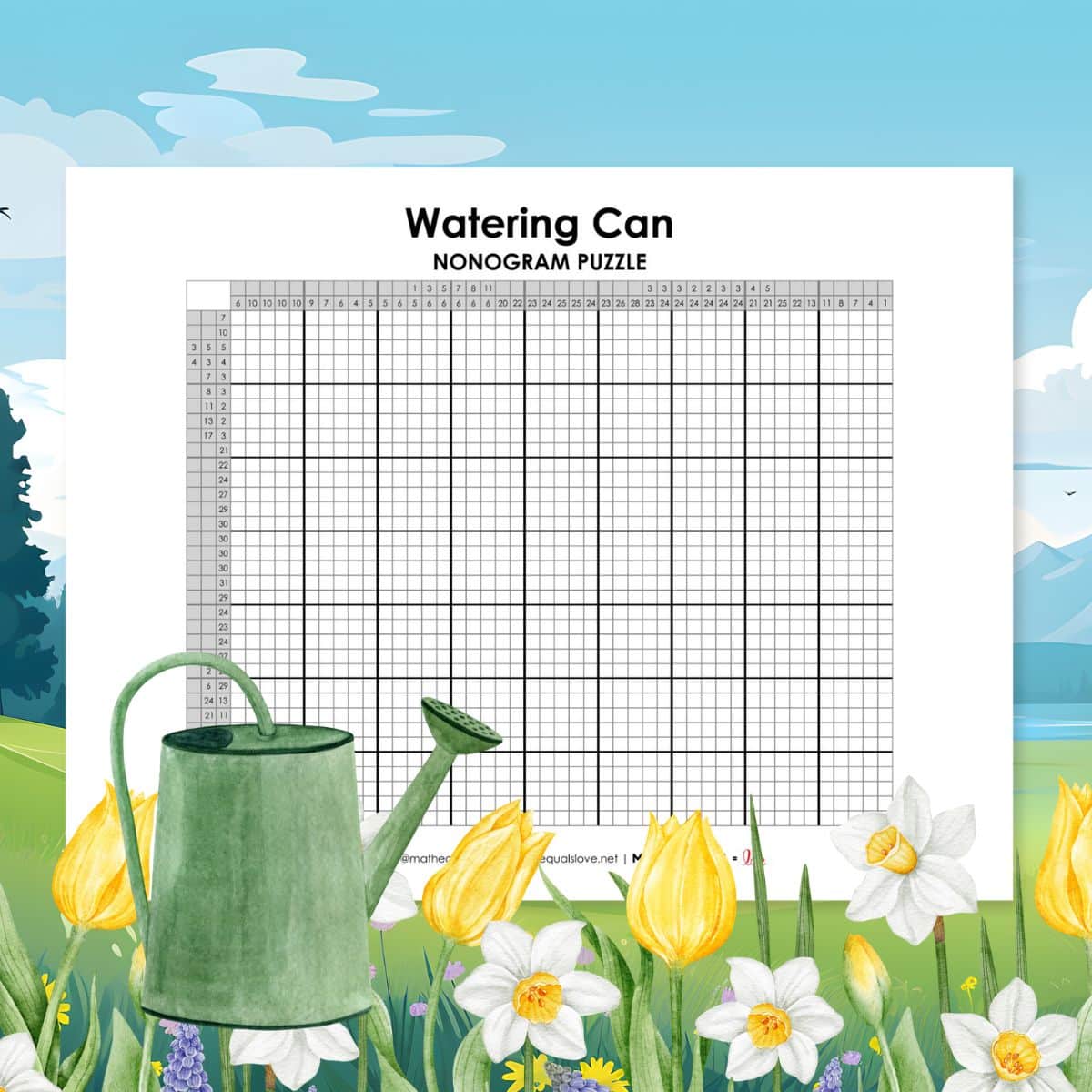

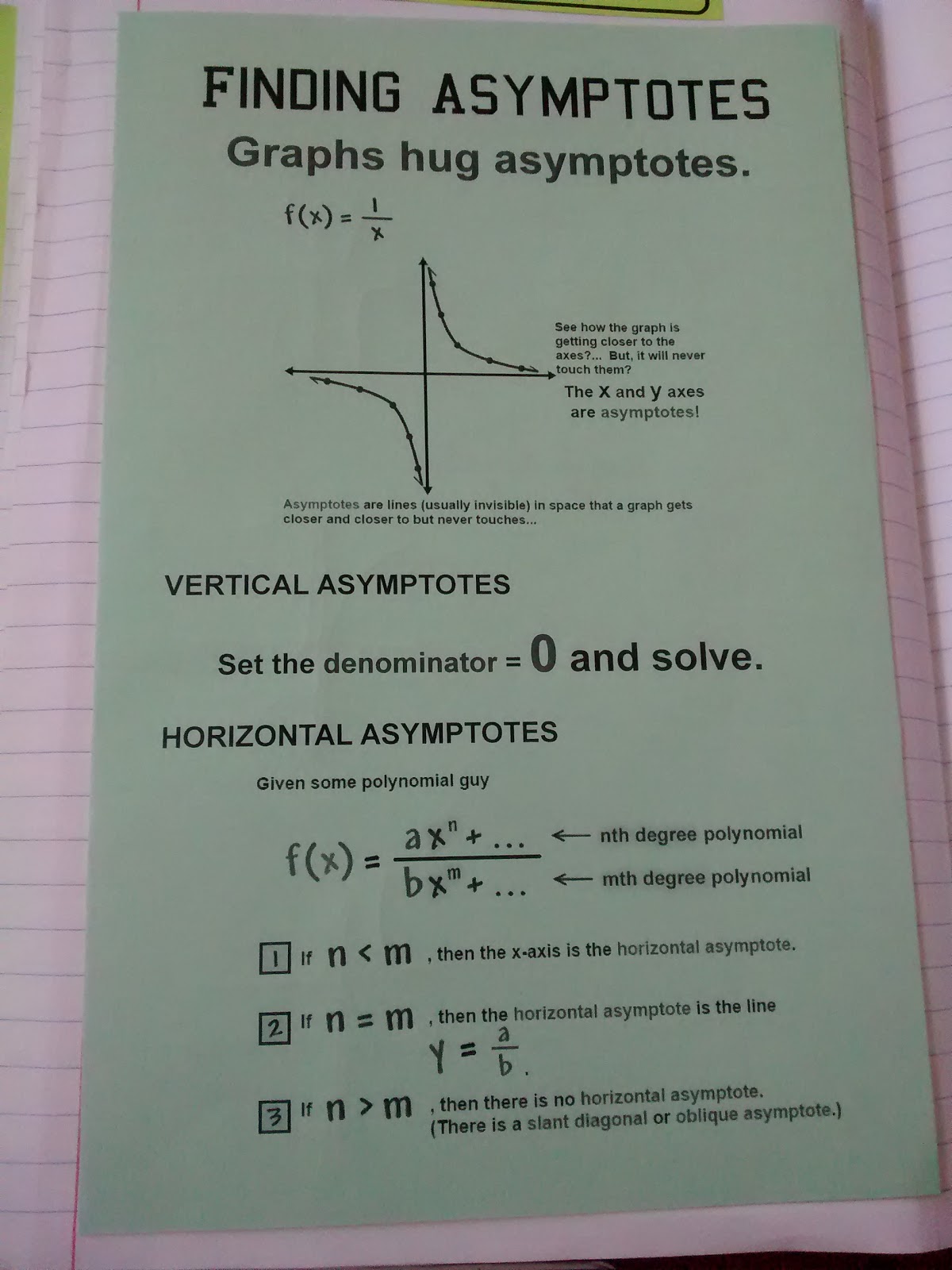


You must just be a few days ahead of me. I'm teaching this topic this week! It's fun to see other approaches.
Agreed! I always like to see how others teach a concept!
I'm looking at your INB. Tried these one year but found students having difficulty with organization. Like that you have it in a composition book. It appears that you don't have students do their HW in them, is this the case? How do you handle class/home work with students and how do they keep it organized? I'm still not positive about the INB but am willing to give it another try.
Thanks, Teri Ryan
I have my students think about their notebooks as a customized textbook. We don't have textbooks, so students are essentially building their own textbooks over the course of the year. All of our homework assignments are in the form of worksheets. Ideally, students would keep these completed and graded assignments in a folder, but most of my students just throw their graded homework away. I think the only way I could get them to keep their homework would be to give them a grade for making a homework portfolio of sorts.
Hope this helps!
"Tried these one year but found students having difficulty with organization."
I've found that Algebra 2 students, especially at-risk students in regular level classes, struggle with the traditional factoring approaches because of a lack of organization: they often erase their attempts and have no clue as to whether they've tried all of the possibilities, and usually give up if they haven't found the factors that work after 3 or 4 attempts.
Being an ex-accountant, I figured their had to be a more organized approach. After some playing around, I came up with an approach that is a decomposition of the box method used to teach FOIL in Algebra 1. It turns out that it is not an original approach–others in history discovered it before me–but it is not commonly taught, or known by most math teachers, because it doesn't show up in most standard high school textbooks.
If anyone is curious, you can view a power point of the method at the link below. Note: when factoring out the GCF in slide 5, you always pull out the sign of the x coefficient, i.e. the GCF of -6x and 8 (for the method to work) is -2.
Glenn Laniewski
Blog:
autismplusmath
My method:
Factoring Quadratics by the Box Method
This approach intrigues me, but I can't get the link to work. Could you resend it? Thanks!
I used your plus/minus sign today. After discussing how square roots have two solutions (mostly), I passed out your plus/minus sign to continue with note taking on solving quad equations with the square root method. After a little while, a student comments, "Oh, that is a plus and minus sign!" I thought it was a symbol for the hospital" Gotta love middle school students. Thank you for all your great material!
I found your blog through twitter and I want to thank you for posting so many resources. I tutor Alg students (& my own kiddo is taking Alg 2 this year). It will be so helpful to use these notes with with them. 🙂